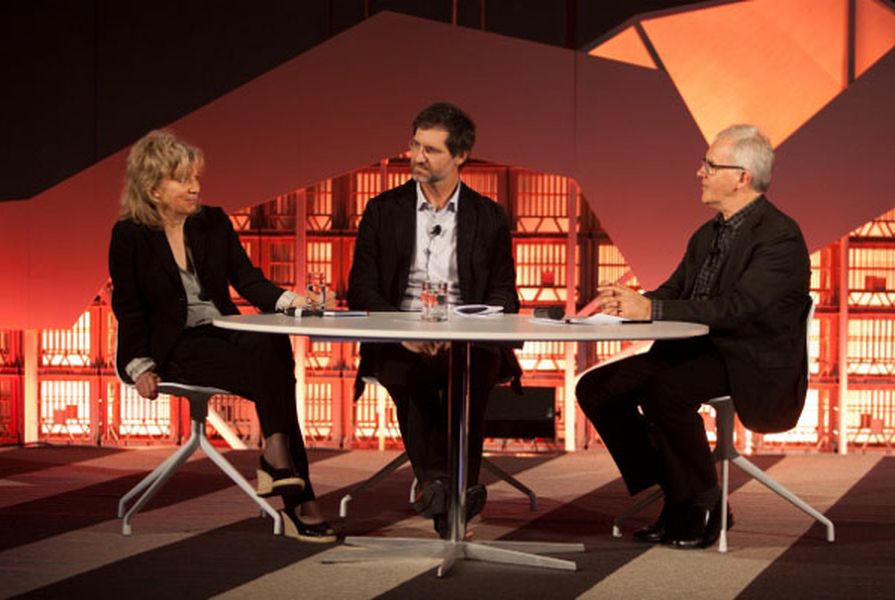In choosing the theme of “experience” for the 2012 National Architecture Conference, creative directors Shane Thompson, Michael Rayner and Peter Skinner set themselves a challenging brief. To negotiate the tension between the concept of the theme and the traditionally static nature of conference presentations, ancillary events (such as the architectural tours that bookended the conference) were used as support. The record number of attendees highlights the success of this approach, although the warm Brisbane weather and announcement of keynote speaker Wang Shu as this year’s Pritzker Prize winner undoubtedly helped.
A number of themes surfaced repeatedly throughout the conference. Several speakers championed the value of smaller-scale buildings as research laboratories. Kjetil Thorsen spoke of their value as a training ground for younger architects. The use of interstitial and in-between spaces, between clusters of more concretely defined structures, was evident in a variety of scales and locations, particularly in Koji Tsutsui’s and Peter Rich’s works. Another thread was the value of using, preserving and learning from local crafts, skills and materials, even when these may not be valued in the immediate context and time (Rich, Shu, Thorsen). Across the plenaries it was lovely to see so many practitioners presenting extensive sketches, drawings and study models to accompany the usual photographs and renders.
Rachel Neeson’s and Kathryn Findlay’s presentations in different sessions of day one were skilfully done: both speakers pared back the number of projects shown to allow the work and underpinning ideas to shine through in a clear and engaging manner. As Imogene Tudor noted on the actively used conference twitter tag #experience2012, there was nary a mention of difficult clients, budget or legislative obstructions, just clear ideas adroitly executed.
Wang Shu’s keynote presentation, which closed day one, led with a strong, detailed contextual grounding of the location and cultural milieu of Amateur Architecture Studio’s work, followed by a brief history of his professional life and approach to architecture. This was deeply interesting, but appeared to come at the cost of actually displaying some of the projects for more than a few seconds, which was frustrating for those who were less familiar with his work. Nevertheless, there were glimpses of the imagination and approach that have been so well rewarded.
Unexpectedly wonderful on the morning of day two was Anuradha Mathur and Dilip da Cunha’s design research into landscapes and water. By drawing attention to the essentially arbitrary delineation of water and land, and highlighting the potential of designing for possibility instead of probability, some fruitful ways of thinking about and designing for marginal lands, extreme weather events and larger-scale water issues emerged. The use of images shown in pairs to draw attention to the difference between, for example, the notion of coast and coastline, was particularly powerful. The reframing of the destruction of New Orleans as a failure of design rather than a failure of levees was particularly resonant, given last year’s flooding in Brisbane.
Given the theme of the conference, the decision to replace audience question time with a very brief question session between each host and speaker was an odd fit, but clearly necessary given the scale and timing of the plenary sessions. We had to wait for day two to see the best of this approach. Iñaki Ábalos offered a critique of Kevin Carmody’s focus on the pavilion as a typology and session host Brit Andresen was able to deftly elicit insight from closing speaker Kjetil Thorsen.
With the exception of a jarringly slick animation set to Norwegian folk singing, Thorsen made good use of the stage and audiovisual materials in presenting humbling reflections on the importance of architecture and the role of generosity in both practice and building. The opportunities presented by switching between analogue and digital techniques was intriguing, and picked up on the notion of “digital thatch” that Findlay had mentioned earlier, underscoring that the idea, rather than the tool, is what adds value to the design process.
Overall, the conference provided an interesting and much-appreciated dose of inspiration. The theme provided a useful way to link an otherwise disparate range of speakers, approaches to architecture and recent Queensland works. I look forward to the conference’s return to Brisbane sooner rather than later.



















